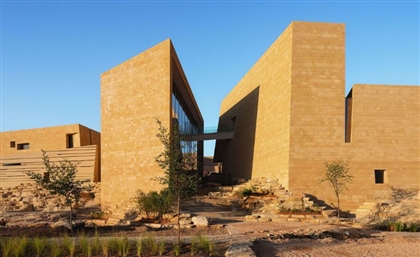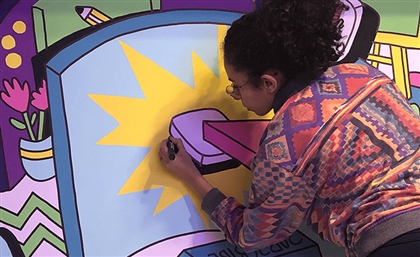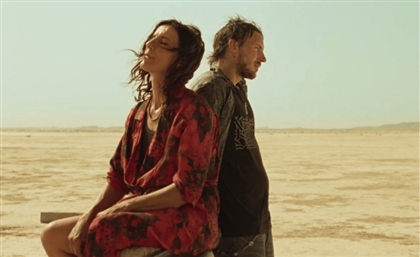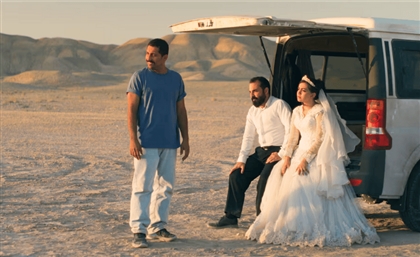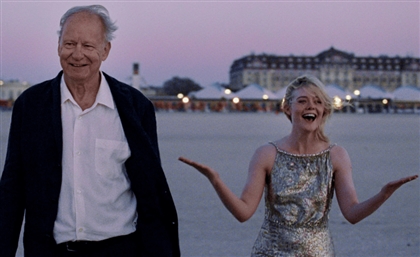Skateboards, Hoops & a Kardashian in Aleppo: Meet Stephany Sanossian
A skateboard inscribed with an Armenian folk song. Kim Kardashian in Aleppo’s souqs. Stephany Sanossian’s mixed media fever dreams explore identity in a fragmented world.
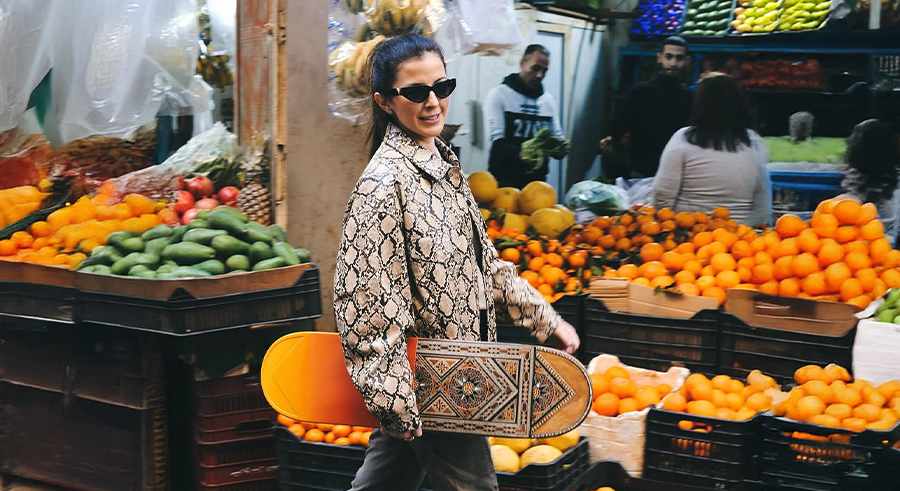
Originally Published on March 30, 2025
A skateboard, a basketball hoop, a Hollywood celebrity, an ancient Armenian folk song—disparate elements, but all recurring motifs in the work of Stephany Sanossian. Her mixed-media collages don’t just challenge the boundaries between East and West, tradition and modernity, memory and reinvention—they dismantle them entirely.
Born and raised in Aleppo, Syria, of Armenian descent, and currently creating art between the Emirates and Lebanon, Sanossian’s work is shaped by a profound sense of movement—across places, histories, and identities. Her pieces ask urgent questions: What does it mean to belong? How does nostalgia shape identity? And what are roots, if not connections?
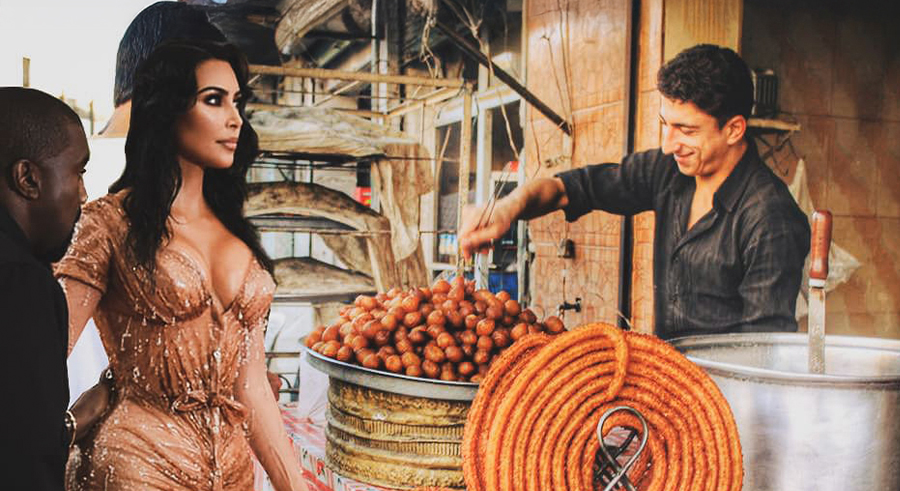
A multidisciplinary artist and designer, Sanossian moves fluidly between collage, installation, digital art, and traditional Syrian craftsmanship. One moment, she’s reconstructing Aleppo’s souq with superimposed images of Kim Kardashian; the next, she’s collaborating with a craftsman in Damascus to create handmade Syrian marquetry. Nothing is off-limits in her world—except artistic stagnation.
Her latest installation, Beneath the Ashes, which debuted at The Foundry’s Contemporary Voices exhibition, draws on the poetry of Adonis, the legendary Syrian-Lebanese writer. The piece is rooted in displacement and memory, weaving in the lines:
"Beneath the ashes, I search for my roots, For the first tales the sun wrote on the face of trees."
“Identity is both inherited and created,” Sanossian says. “I wanted to explore what it means to hold on to something that constantly shifts.”
Skateboards, Hoops, and Cultural Codes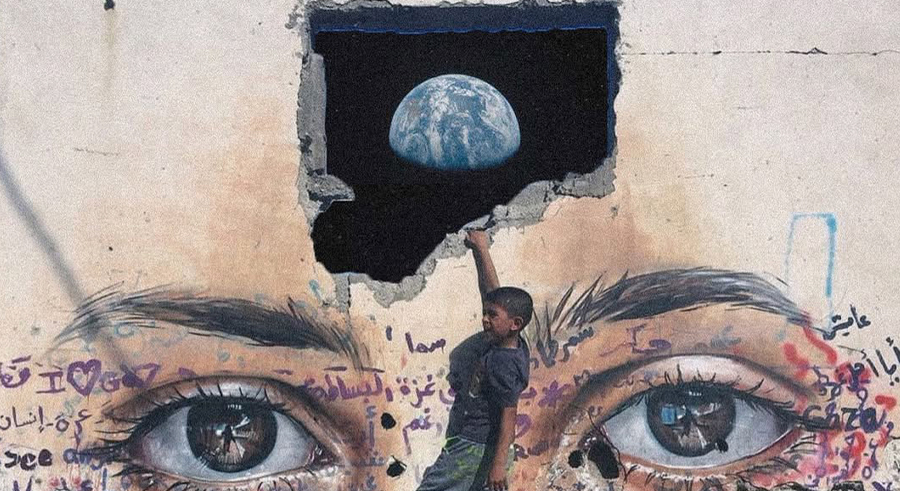
Sanossian's artistic practice thrives on contrast. One of her most striking series features skateboards inscribed with the lyrics of ‘Sardarapat,’ a patriotic Armenian folk song that commemorates the 1918 battle that saved Armenia from Ottoman invasion. Another series layers Hollywood icons over images of Syria’s streets, blending high-gloss celebrity with the rawness of reality.
“When you mention Syria, people talk about war. No one talks about our culture,” she says. “I want to change that.”
Then there’s the basketball hoop, a recurring image in her work. It’s the playground hoop of every Middle Eastern schoolyard, a universal marker of childhood, community, and fleeting moments of unity. “We all share the same sunrises and sunsets,” Sanossian says. “Yet identity so often divides us.”
From Barcelona to Damascus: A Journey of Dualities

Sanossian’s path to becoming an artist wasn’t straightforward. She holds a Master’s degree in Research for Design and Innovation from Elisava in Barcelona, a city whose surrealist aesthetic and bold design culture profoundly influenced her. But no matter where she moves, her art remains anchored in the Middle East.
She has spent the past few years working to reclaim traditional Syrian and Armenian craftsmanship in new contexts. In 2022, she collaborated with a craftsman in Damascus to explore Syrian handmade marquetry, creating a fusion of traditional techniques and modern sensibilities, blending centuries-old woodworking techniques with contemporary design.
“I didn’t want to just use digital tools anymore,” she says. “I wanted to touch the materials, feel the process, and bring something tangible into the world.”
That hands-on approach is also evident in her evolving relationship with NFTs and blockchain art—not as a rejection of tradition, but as an extension of it. “We were already in the metaverse,” she says. “It just got a name now.”
Pop Culture, Irony, and the Art of Blurring Borders
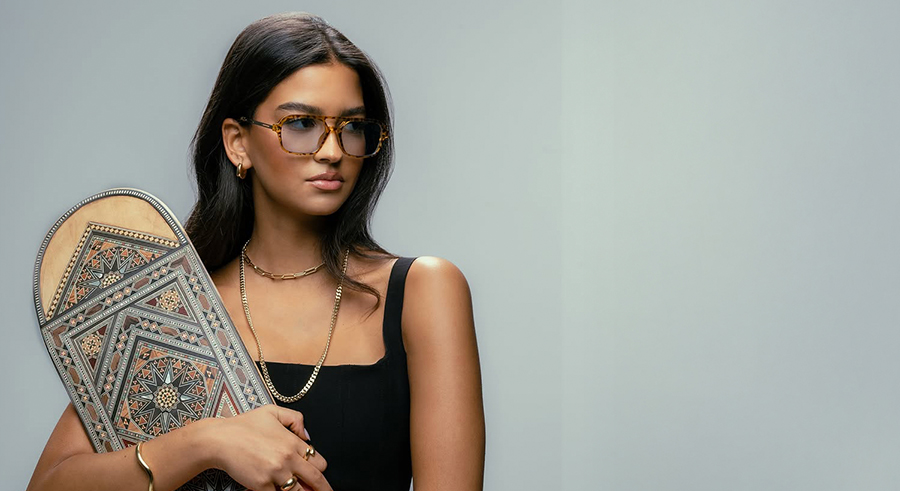
One of her most talked-about projects involves inserting celebrities into Syrian landscapes—Kendall Jenner lounging in Aleppo, Kim Kardashian shopping in the souq. The images are surreal, humorous, but also unsettling.
Each piece toys with the idea of cultural voyeurism, forcing viewers to confront how the West consumes Middle Eastern identity—often as an aesthetic or backdrop, rather than a lived experience.
Her "Aleppo Fashion Week" series, where runway models strut through historic Syrian sites, functions in a similar way. “These places aren’t just ruins,” she says. “They hold stories. And those stories deserve to be seen in a different light.”
A Relentless Drive to Create
Sanossian’s recent work includes group exhibitions at Leila Heller Gallery and Downtown Design Editions 2024, where her latest mixed-media pieces explore competition, resilience, and self-determination.
"The Coach’s Tablet: Wisdom and Strategy" plays on the metaphor of life as a coach’s playbook—some overcomplicate it, others focus. The orange background symbolizes energy and determination.
"Arena of Self-Competition" examines personal ambition through the lens of basketball, using the blue background to represent focus and introspection.
For Sanossian, artistic blocks don’t exist—only hesitation. “Just sit down, stand up, do whatever you need to do,” she says. “Make art. I promise you, it isn’t ugly.”
The Process: Collecting Fragments, Building Narratives
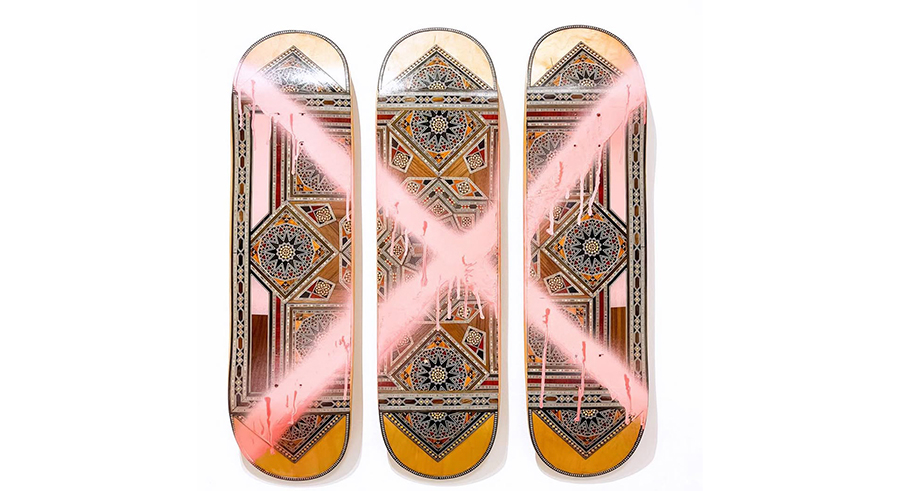
Her creative process is meticulous. Before assembling a collage, she dives into deep research, archival images, and personal memories. Sometimes, she conducts informal surveys among friends and family—gathering perspectives before selecting materials.
“Finding unexpected connections between unrelated elements is part of the challenge,” she says. “A celebrity, a historical site, a cultural symbol—once you layer them, they start speaking to each other.”
When working on physical installations, she focuses on creating immersive experiences, where audiences walk through and interact with the work. “It’s not just about looking at something,” she says. “It’s about feeling its presence.”
An Artist Between Worlds

Sanossian’s art is neither fixed nor finished—it exists in motion, constantly evolving. It speaks to the liminal space between past and present, East and West, digital and physical.
Her world is one where a skateboard can carry the weight of a nation’s history, where a basketball hoop becomes a metaphor for human connection, where Kim Kardashian wandering through Aleppo can make us reconsider everything we think we know about identity.
"Art shouldn't be rare or exclusive," she says. "Its value isn’t in its scarcity—it’s in its ability to connect.”
- Previous Article Egypt’s ‘Kultured Glass’ Asks You to Wear Your Heart on Your Head
- Next Article Six Unexpected Natural Wonders to Explore in Egypt
Trending This Week
-
Dec 04, 2025








